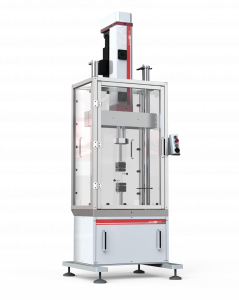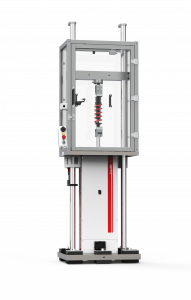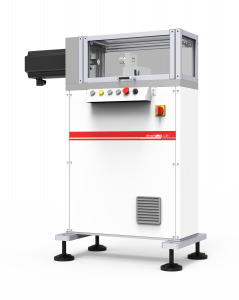WHAT IS A FATIGUE TEST?
A fatigue test is a controlled and systematic procedure used to evaluate the inherent ability of a material to withstand cyclic loading conditions. These repeated stresses, often in the form of tension, compression, bending, torsion or combinations of these, can induce damage to the material or even its failure, even though the applied loads are less than the ultimate strength of the material.
The results of a fatigue test provide essential information on the durability and safety of materials used in critical applications, from aerospace components to automotive parts and structural engineering.
What is the phenomenon of fatigue in materials?
The phenomenon of fatigue in materials is a mechanical degradation process characterised by progressive, localised and permanent structural changes when subjected to fluctuating stresses and strains. This phenomenon, often observed in materials subjected to cyclic loading, leads to a critical point at which the material may develop cracks or eventually fail, despite applied loads remaining below the ultimate strength of the material.
In the course of fatigue, materials undergo plastic deformation, which may manifest itself as micro-scale deformation. When these localised deformations accumulate under continuous stress, they can lead to the development of macroscopic damage and eventually culminate in the fracture of the material or component.
How to perform a fatigue test?
Conducting a fatigue test involves loading a specimen into a fatigue testing machine, applying the predetermined stress, unloading it at zero load or in the opposite direction and repeating this cycle until the end of the test. The test may be conducted for a predetermined number of cycles or until failure of the specimen, depending on the specific parameters of the test.
What is the purpose of fatigue testing?
The main objective of a fatigue test is usually to ascertain the expected service life of a material under cyclic loading. However, fatigue strength and crack resistance are also important parameters. Fatigue life refers to the total number of cycles a material can withstand under a single load regime. A fatigue test is also useful to determine the maximum load a specimen can withstand for a given number of cycles. All these attributes are of immense importance in industries where materials are subject to fluctuating, rather than constant, forces.
From Formula 1 car chassis to dental implants, understanding and testing fatigue is crucial in the design of components exposed to cyclic loads. Fatigue tests help to estimate the service life and evaluate the durability of components in relation to applied stress levels, ensuring the reliability of materials in different applications.
Different types of fatigue tests
- High cycle fatigue test: Standard fatigue test conducted at frequencies between approx. 1 and 5000 Hz.
- HCF (DIN 50100) High cycle fatigue test: Standard fatigue test conducted at frequencies between approx. 1 and 5000 Hz.
- Bending fatigue test on rotating bars, DIN 50113.
- Tensile-compression fatigue tests.
- Evaluation of strength (fatigue strength) against cyclic stresses using a combination of tension, unloading and compression.
- Giga-cycle fatigue test: fatigue test in which approximately 1 × 10^9 cycles or more are applied in a short period of time, using ultrasonic vibrations, etc.
- Fatigue crack propagation test machine: Evaluates the rate of crack propagation under cyclic stresses.
VHCF
Very high cycle testing
Most common fatigue tests
- ASTM D3479 – Tension-Tension Fatigue of Polymer Matrix Composite Materials
- ASTM D7774 – Flexural Fatigue Test Equipment for Plastic Materials
- ASTM E2207 – Equipment for Testing Axial-Torsion Fatigue in Thin-Walled Tubular Materials
- ASTM E2368 – Thermomechanical Fatigue Test Equipment
- ASTM E466 – Controlled-Load, Constant-Amplitude Fatigue Testing of Metals
- ASTM E467 – Constant Force Axial Fatigue Test System – Testing Machines
- ASTM E606 – Strain-Controlled Fatigue Testing at High and Low Cycles
- DIN EN 6072 – Aerospace Series – Metallic Materials – Test Methods – Constant Amplitude Fatigue Testing
- DIN 50100 – Controlled Load Fatigue Tests – Performance and Evaluation of Cyclic Tests with Constant Load Amplitude on Metal Specimens and Components
- ISO 1099 – Metallic Materials – Fatigue Tests – Controlled Axial Force Method
- ISO 7206 – Testing of Hip Implants
- ISO 14801 – Equipment for Fatigue Testing of Dental Implants
- ISO 15024 – Interlaminar Fracture toughness Testing for Plastic Composite Materials – Testing Machines
- ISO 22675 – Facilities for Fatigue Testing of Protective Ankle and Foot Devices
Fatigue testing machines
EA SERIES
Electromechanical actuators
UD SERIES
Linear testing machines
TM SERIES
Torsional testing systems





